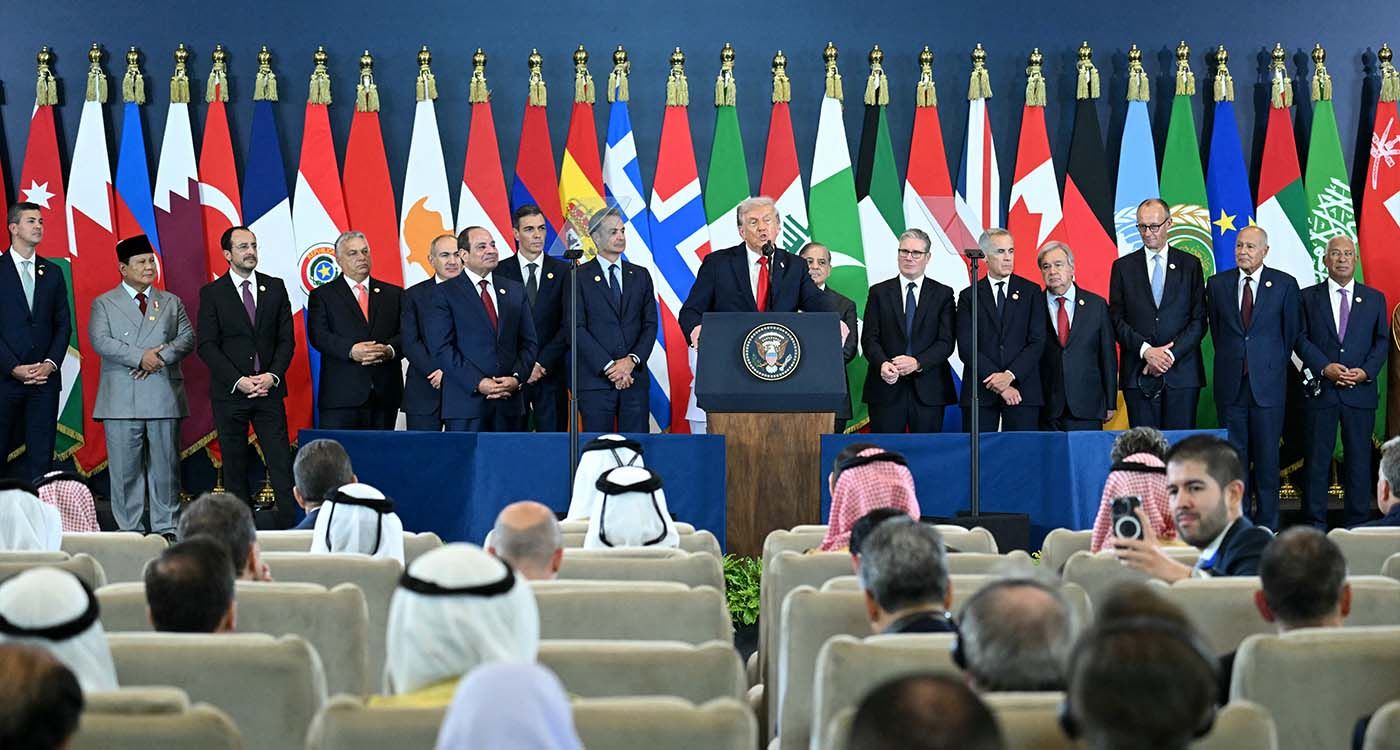- Home
- Middle East
- Saluting Those Who Stand for Peace

©Photo by SAUL LOEB / AFP
The latest events in Sharm al-Sheikh echo the spirit of the Camp David Accords nearly 50 years ago, a historic turning point that reshaped the trajectory of the Arab world. In the aftermath of the 1967 Naksa (the defeat) and amid shifting regional realities, Egypt and Jordan would later move toward peace with Israel.
At that time, Egypt commanded the largest and most powerful army in the Arab world, posing a significant strategic challenge to Israel. This balance of power prompted direct US intervention, aimed at easing tensions, forging an agreement between the two sides, and securing Israel’s borders on both its eastern and western fronts.
Over the past 50 years, the regional landscape has shifted dramatically, and Israel now faces new threats on multiple fronts. The United States, under the leadership of Donald Trump, launched an initiative to ensure Israel’s security once again – perhaps for the last time. In this instance, Israel’s primary threats came from Iran and its regional proxies, including Hamas in Gaza, Hezbollah in Lebanon, the Houthis in Yemen, the Popular Mobilization Forces in Iraq and the Iranian regime in Tehran.
The Sharm al-Sheikh conference did not end the conflict, but it established its inevitable outcome: the safeguarding of Israel’s security through a meticulously crafted plan expected to unfold over time. Gaza has been disarmed, and Israel has consolidated its security along its western border while asserting control over the West Bank along its eastern frontier.
Currently, Israel’s attention is focused on the northern border, aiming to consolidate the results of the ceasefire agreement reached in November 2024 with Hezbollah and establish a mechanism capable of fostering broader peace across the region.
The difference between the late 1970s and today rests on two key factors. The first factor involves the challenge posed by the Syrian regime. Following Nasser’s decline after his defeat, Hafez al-Assad stepped in to confront Israel – but with far greater cunning and strategic acumen. He chose to negotiate and maneuver over the ruins of the occupied Golan Heights, effectively tying the conflict to Israel, at the cost of establishing demarcation lines in Lebanon, which were only drawn in 1978 as part of the agreement.
Assad’s approach toward the Christian communities evolved, culminating in missile attacks during the Hundred Days’ War. On the ground, the Syrian and Israeli armies carved out the dividing lines as they vied for control of the mountainous region.
Today, the Assad regime is no longer an obstacle. With the fronts in Lebanon and Syria now clearly divided, the new Syrian leadership appears ready to take all necessary measures to reach an agreement with Israel.
The second factor is the widespread Arab recognition of what transpired at the Sharm al-Sheikh summit. Half a century ago, Egypt’s agreement faced limited support across the Arab world, reflecting calculations not shared by all parties at the time. Today, however, the accords enjoy broad Sunni Islamic legitimacy, with parties ready to endorse peace without hesitation, albeit under the conditions they have stipulated.
In 1978, the Christians bore the brunt of the Hundred Days’ War, with Israel failing to protect them. Today, the concern is that the Shia could face a similar fate, as Iran is unlikely to offer them any protection.
Read more




Comments